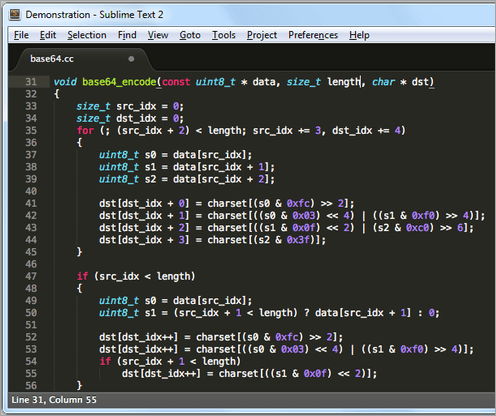

The Best Text Editors for BeginnersĪ good text editor for beginners should be intuitive and easy to use and have the basic features such as find and replace, cut, copy and paste, quick duplication, and syntax highlighting. Not that you know what text editors are and aren’t, let’s take a look at the best text editors for new programmers. However, some more advanced text editors have IDE features and capabilities. The basic function of a text editor is to write and edit text but IDEs allow you to accomplish a little much more (such as building, running and even testing your code). Text editors are also not the same as IDEs ( integrated development environments). This is because word processors create formatted documents with visual styling but coding is all about plain text.Ĭompared to word processors, text editors also have more technical features such as syntax highlighting. While text editors and word processors like MS Word and Google Docs have some similarities, word processors are not suitable for coding.
BEST TEXT EDITOR FOR PYTHON IN WINDOWS INSTALL
However, you will want to install a professional text editor, as it will allow you to write powerful code in a range of coding languages from HTML, PHP, Python, to Ruby.
BEST TEXT EDITOR FOR PYTHON IN WINDOWS FOR MAC
Simply put, it’s where you will write and manipulate all your code.īeing such a fundamental tool for coders, computers come with a basic text editor already installed (TextEdit for Mac and Notepad for Windows). Like the name suggests, a text editor is a computer application designed for writing and editing plain text. These include:įirst, let’s explore what text editors are. To help you find a trusty companion in your learning to code journey, I’ve rounded up the best text editors for beginners based on popularity, ease of use, and cost. This is why it’s important to install a solid code editor even before you tackle your very first tutorial. It’s where you will write and edit all your code, whether you’re building a website or an app. python-version files, and the global default.A good text editor is an essential tool in every developer’s toolkit. pyenv then works out which version of Python should be run based onĮnvironment variables. Looks for a program named python, it looks inside the shims directoryįirst, and uses the fake version, which in turn passes the command on to Interpreter (plus other tools like pip and 2to3). Pyenv works by filling a shims directory with fake versions of the Python Pyenv isn’t just limited to the CPython versions – it will also install PyPy,Īnaconda, miniconda, stackless, Jython, and IronPython interpreters. One project, while still using Python 3.4 as the default interpreter. Problem of having different projects requiring different versions of Python.įor example, it becomes very easy to install Python 2.7 for compatibility in Of the Python interpreter to be installed at the same time. Pyenv is a tool to allow multiple versions In order to do this, add the following line to your It’s very handy to call this function whenever you saveĪ file. The plugin willĭisplay errors at the bottom of the screen, and provide an easy way to jump to Now you can map theįunction Flake8 to any hotkey or action you want in Vim. Very handy plugins to do these checks from within the editor.įor PEP8 checking and pyflakes, you can install vim-flake8. If your Vim is compiled with +python you can also utilize some Luckily pycodestyle and Pyflakes will do thisįor you. Get the most out of Vim, you should continually check your code for syntaxĮrrors and PEP8 compliance. These plugins supply you with a basic environment for developing in Python. Over the syntax file included in Vim 6.1. There is also a handy syntax plugin called syntax featuring some improvements Handy plugin called indent, which handles indentation settings for Python If you also use Vim for other languages, there is a With these settings, newlines are inserted after 79 characters and indentation Set textwidth = 79 " lines longer than 79 columns will be broken set shiftwidth = 4 " operation > indents 4 columns << unindents 4 columns set tabstop = 4 " a hard TAB displays as 4 columns set expandtab " insert spaces when hitting TABs set softtabstop = 4 " insert/delete 4 spaces when hitting a TAB/BACKSPACE set shiftround " round indent to multiple of 'shiftwidth' set autoindent " align the new line indent with the previous line


 0 kommentar(er)
0 kommentar(er)
